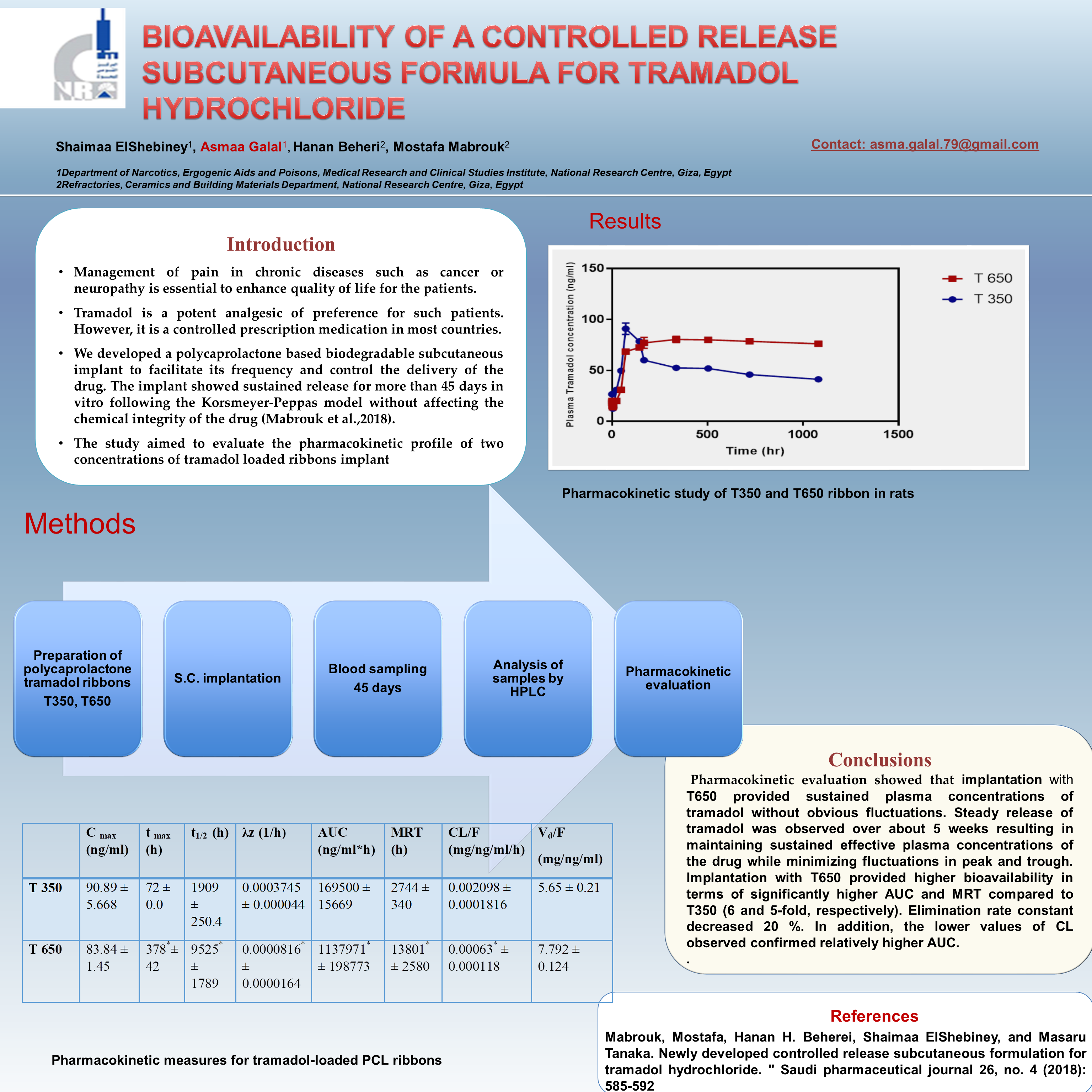Asmaa Galal
Conference 2024 Poster
Poster Title
Bioavailability of a controlled release subcutaneous formula for tramadol hydrochloride
Authors and Affiliations
Shaimaa ElShebiney1, Mostafa Mabrouk2, Hanan Beheri2, Asmaa F. Galal1
1Narcotics, Ergogenics and Poisons Department, Medical Research and Clinical Studies Institute, National Research Centre, Giza, Egypt
2Refractories, Ceramics and Building Materials Department, Institute, National Research Centre
Abstract
Background
Management of pain in chronic diseases such as cancer or neuropathy is essential to enhance quality of life for the patients. Tramadol is a potent analgesic of preference for such patients. The relatively short half-life of tramadol formulations necessitates frequent dosing every 4-6 hours to achieve around the clock treatment (relieve) for persistent pain. We developed a polycaprolactone based biodegradable subcutaneous implant to facilitate its frequency and control the delivery of the drug. The implant showed sustained release for more than 45 days in vitro following the Korsmeyer-Peppas model without affecting the chemical integrity of the drug (Mabrouk et al., 2018). The current study investigated the pharmacokinetic profile of the newly developed implants. Moreover, the likelihood of abuse liability was assessed.
Methods
Ribbons of polycaprolactone polymer (T350, T650) were prepared and loaded with tramadol HCl in two quantities [350 and 650 mg]. In vivo pharmacodynamic and pharmacokinetic parameters were evaluated. Ribbons (75mm2) were implanted in skin layer of male Wistar rats and tramadol plasma level was monitored by HPLC/UV. Analgesic activity was observed by hot plate test. Liver function and general oxidative stress were evaluated at the end of the study.
Results
The T350 loaded ribbons showed tmax of about 72 hours and Cmax (91 ng/ml), while the T650 loaded ribbon showed tmax at around 378 hours and Cmax (83 ng/ml). However, the pharmacodynamics study proved that analgesic efficacy of tramadol started once it was implanted and decreased along time. Examining liver functions revealed safety of introduced treatments where no alterations were observed. Serum oxidative biomarkers were of normal range.
Conclusions
Pharmacokinetic evaluation proved similar pattern to in vitro model and achieved sustained delivery over long period of time reached 45 days. However, pharmacodynamics showed ineffectiveness in pain management due to sensitizing effect, that is an unpreceded observation. Other release models should be investigated.


An excellent strategy. Were the implantation and blood sampling analyses conducted in humans? Or in animals? How many humans/patients were analyzed?